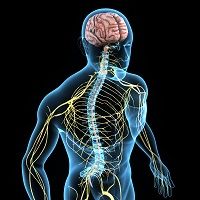Antidepressants Deemed Effective Against Neuropathic Pain
Not only have researchers from Mount Sinai Hospital discovered that common antidepressants can help treat neuropathy, but they also identified the gene associated with pain and depression.

Not only have researchers from Mount Sinai Hospital discovered that common antidepressants can help treat neuropathy, but they also identified the gene associated with pain and depression.
Chronic neuropathic pain can persist even after the injury is treated or the primary condition is addressed. Previous research reported by MD Magazine explained the prominent correlation between chronic pain and depression; however, the driving factors behind the relationship have remained fairly mysterious. Antidepressant drug classes, such as TCAs (tricyclic antidepressants) and SNRIs (Selective Serotonin-Norepinephrine inhibitors), are used to treat pain and depression-related symptoms, and studies have found that they control pain transmission via spinal cord. Brain involvement, however, has not been fully understood.
Using mice with chronic neuropathic pain, the team found that the gene RGS9 controls adaptations to impact pain and depression. RGS9 codes for the protein RGS9-2. The mice that did not have the gene responded to very low doses of antidepressants quicker than those that did have RGS9. In addition, the animals without it did not show signs of depression-related behaviors and had significant improvement of sensory deficits, according to the report in Proceedings of the National Academy of Sciences of the United States of America.
“Our data reveals that antidepressants that target specific neurotransmitters in the brain, particularly TCAs and SNRIs, regulate chronic pain and depression-related symptoms through actions in the nucleus accumbens,” Venetia Zachariou, PhD, associate professor in the Icahn School of Medicine at Mount Sinai, said in a news release.
Antidepressants are not addictive like opioids, which are often prescribed for chronic pain. Therefore, they can serve as an effective alternative for patients without the risk of certain adverse effects.
“We don’t yet know if the typical pain-processing pathways in the spinal cord and the pathways we’ve identified in the brain reward center are directly linked, but we now know more about the cellular pathways that need to be activated in order to achieve pain relief and that effective therapeutics must target both pathways,” Zachariou concluded.